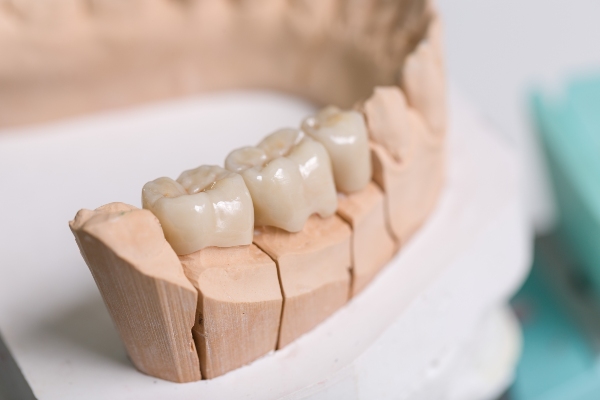 A dental bridge is an effective solution for replacing missing teeth and restoring function and appearance. When considering a dental bridge, patients often encounter two main options: traditional and Maryland bridges. Understanding the differences between these types can help patients make an informed decision tailored to their specific dental needs and preferences.
A dental bridge is an effective solution for replacing missing teeth and restoring function and appearance. When considering a dental bridge, patients often encounter two main options: traditional and Maryland bridges. Understanding the differences between these types can help patients make an informed decision tailored to their specific dental needs and preferences.
What is a traditional dental bridge?
A traditional dental bridge is one of the most commonly used options for replacing a missing tooth or teeth. It consists of one or more artificial teeth, known as pontics, anchored in place by dental crowns attached to the natural teeth on either side of the gap. These anchoring teeth, called abutment teeth, provide stability and ensure the bridge remains secure during eating and speaking.
Traditional bridges are durable and long-lasting, often made of materials such as porcelain fused to metal or ceramic. This type of bridge is suitable for patients with strong, healthy teeth adjacent to the gap, as these teeth need to be reshaped to accommodate the crowns.
Benefits of traditional dental bridges
Traditional dental bridges offer a natural appearance, blending seamlessly with surrounding teeth. They are sturdy enough to withstand chewing forces and can replace multiple missing teeth in a row. This type of dental bridge is a popular choice for patients seeking a reliable and aesthetically pleasing option.
What is a Maryland dental bridge?
A Maryland dental bridge is another option for replacing missing teeth, but it is designed differently than the traditional bridge. Instead of using crowns to anchor the bridge, a Maryland bridge employs a metal or porcelain framework bonded to the back of the adjacent teeth. This eliminates the need to reshape healthy teeth, preserving more of their natural structure.
Maryland bridges are typically used to replace front teeth due to their less intrusive design and ability to blend well with the natural smile. The lightweight framework ensures the patient experiences minimal discomfort during and after placement.
Benefits of Maryland dental bridges
Maryland dental bridges are a conservative option for replacing a missing tooth, as they require less alteration of surrounding teeth. They are often more cost-effective than traditional bridges and are suitable for patients who prioritize preserving their natural tooth structure.
Key differences
The primary difference between traditional and Maryland dental bridges lies in their anchoring methods. Traditional bridges rely on dental crowns for support, while Maryland bridges use a bonded framework. This structural distinction impacts their durability, application, and preparation requirements.
Traditional bridges are better suited for replacing molars or areas subject to higher chewing pressure, while Maryland bridges are ideal for front teeth where aesthetics and minimal invasiveness are priorities. Patients with multiple missing teeth in one area may benefit more from the traditional option, as it offers greater strength and stability.
Choosing the right dental bridge
The choice between a traditional and Maryland dental bridge depends on factors such as the location of the missing tooth, the condition of the surrounding teeth, and the patient's personal preferences. Consulting with a general dentist ensures that all options are explored and the most appropriate solution is chosen to restore the smile's function and beauty. For more information, schedule a consultation visit today at Sammamish Dental Center.
Request an appointment or call Sammamish Dental Center at 425-340-3113 for an appointment in our Issaquah office.
Related Posts
The right dental bridge can help you regain your self-esteem and dental function. But it can be challenging to determine which will help you the most. Your dentist can assist you by explaining each type. Here are the factors you should consider when choosing the most suitable dental bridge for your needs.The patient can choose…
Missing teeth can significantly impact your oral health, appearance, and confidence. Fortunately, teeth replacement options like dental bridges can help restore your smile. Dental bridges are prosthetic devices designed to bridge gaps made by one or more missing teeth, repairing the function and appearance of your smile.Dental bridges are fixed dental restorations that replace missing…
Dental bridges help restore smiles and maintain oral health by replacing missing teeth. Understanding the different types of dental bridges can help you choose the right solution for tooth loss. The following blog covers the four main types of dental bridges and their features.Traditional dental bridges are among the most common options for replacing missing…


